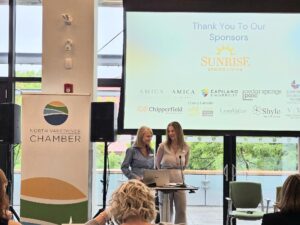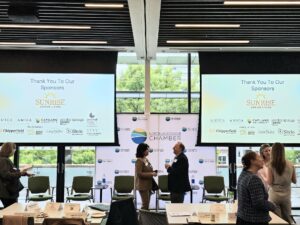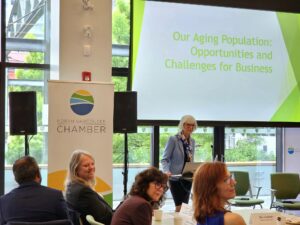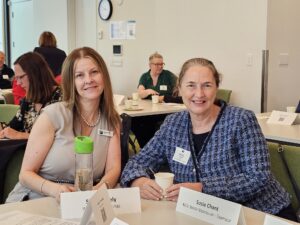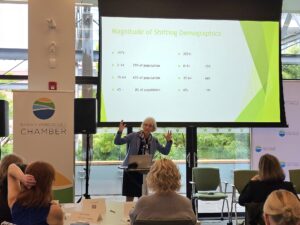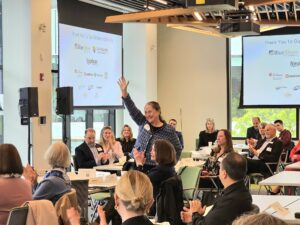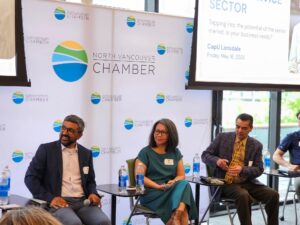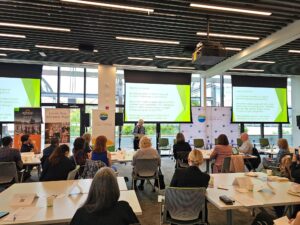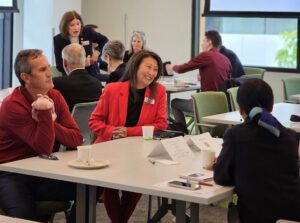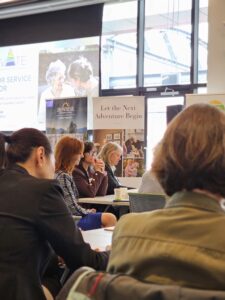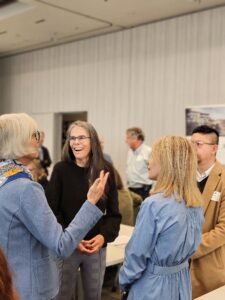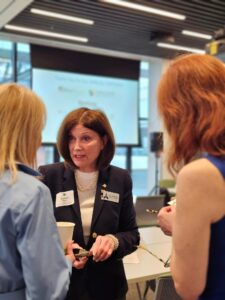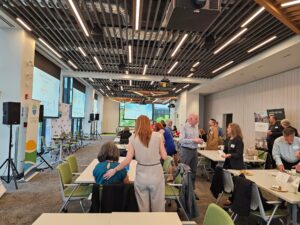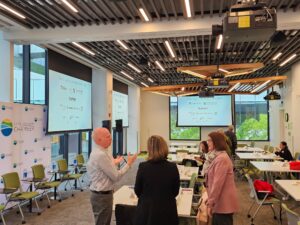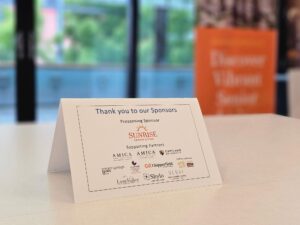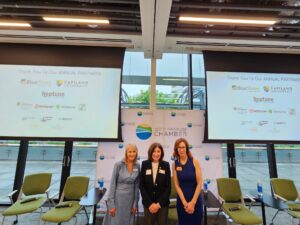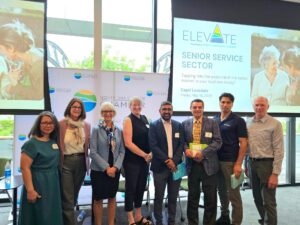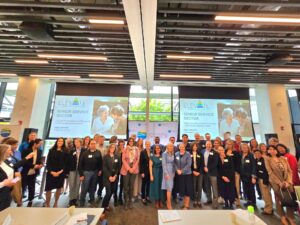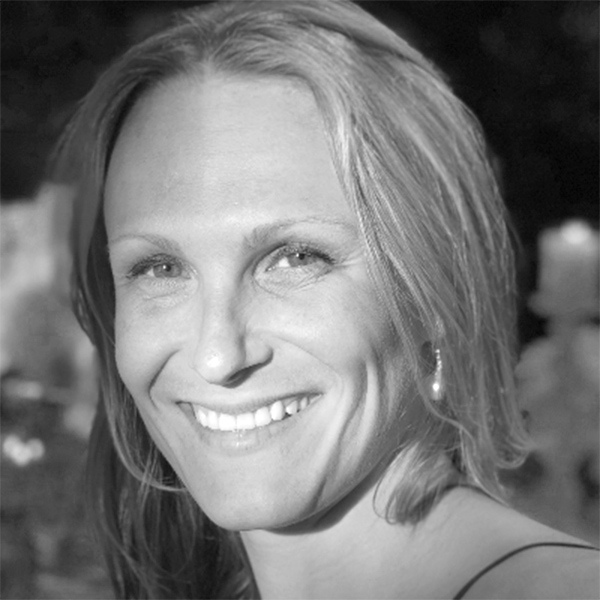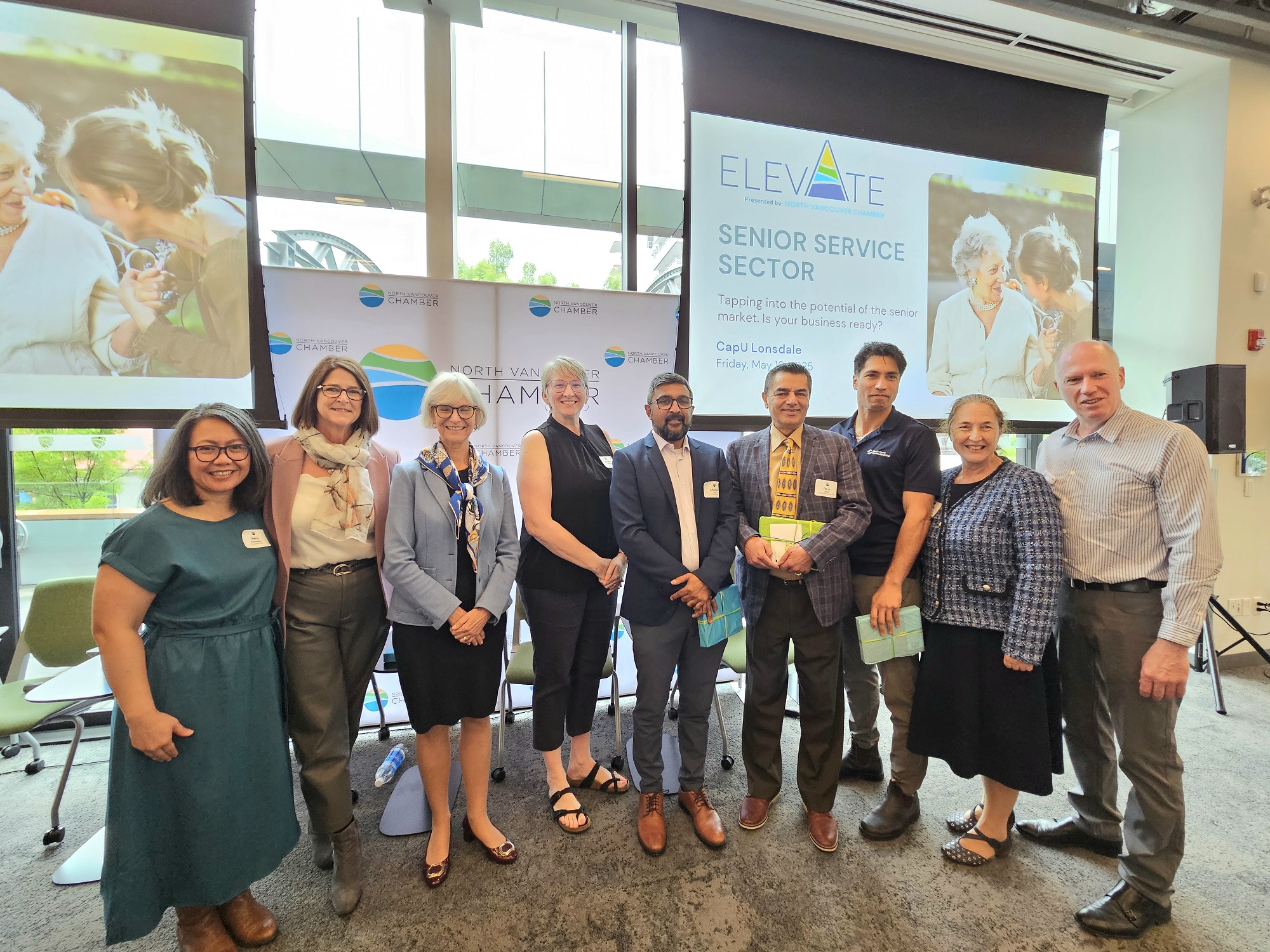
ELEVATE: Senior Service Sector panelists and keynote speaker with NV Chamber CEO Patrick Stafford-Smith, North Vancouver City Mayor Linda Buchanan, and North Vancouver-Seymour MLA Susie Chant.
We had a fantastic turnout at ELEVATE: Senior Service Sector, hosted at the Capilano University Lonsdale campus on Friday, May 16. The event brought together a dynamic mix of local businesses, government officials, and non-profits, all eager to connect and explore the expanding opportunities in the senior market. It was a morning of insightful discussion, collaboration, and inspiration focused on how we can better support and serve this vital and growing demographic.
The power of data and demographics in the senior economy
Our keynote speaker, Dr. Isobel Mackenzie, Adjunct Professor in the Department of Gerontology at Simon Fraser University, delivered a compelling and data-rich address that challenged common assumptions about aging and laid out clear implications for the future of business in B.C.
Mackenzie emphasized that “the details matter”—especially when businesses are planning for the needs of an aging population. While those aged 65 and older now represent 19% of the population (up from just 8% in 1971), they are far from a single market:
-
95% of seniors live independently, though this drops to 70% at age 85.
-
The median income for seniors is $36,000, and 30% receive the GIS.
-
1 in 5 seniors rent, and many are “asset-rich but income-limited.”
-
Most continue driving until around age 85, after which driving rates fall.
Dr. Mackenzie encouraged attendees to look beyond surface-level assumptions, emphasizing that businesses must recognize the emergence of many niche markets within the senior population. For example, while there are over 1.1 million British Columbians aged 65+, the largest portion (612,000) are aged 65 to 75—a group with vastly different consumer habits and health needs compared to those 85 and older.
“Understand generational differences across the aging spectrum. The 85-year-old of today is not the same as the 85-year-old 15 years from now—adapt and change.”
At a macroeconomic level, the aging population presents complex challenges:
-
Declining consumer spending in retirement impacts overall GDP.
-
Healthcare and care costs are rising, with the care economy now making up 13% of Canada’s GDP and 22% of jobs.
-
The labour force is shrinking even as demand remains steady, creating upward pressure on wages.
-
Notably, the fastest-growing labour force segment is 65+, with 30% currently participating—a trend that presents both opportunity and need for adaptation.
Her key takeaway? Know your market. Be precise. And never underestimate the value of listening to your customer. We often hear about what seniors ‘need,’ said Mackenzie, but that might not be what they ‘want.’
“Something is only worth what someone is willing to pay for it—and the customer is always right … at any age.”
Panel discussion: real-world senior sector insights
Our panel of local leaders further explored the challenges and opportunities in serving older adults.
Cherian Itty, Owner/Managing Director of Comfort Keepers, spoke on the slow but steady shift in service needs across industries. He stressed the importance of training staff to better engage with seniors, creating accessible services, and forming partnerships with non-profits to help deliver vital programs. “Seniors rarely need just one service,” he said. He also highlighted the need for affordable housing and better transit options for frontline workers.
Sohail Kamal, CEO of North Shore Sports Medicine, shared how his clinic unintentionally transitioned into the senior services sector through intergenerational client care. “We didn’t realize we were in the seniors’ business,” he said, emphasizing the need for adaptable business models and simplified access to government funding.
Annwen Loverin, Executive Director of Silver Harbour Seniors’ Activity Centre, underlined the importance of warm referrals and wraparound supports for seniors. She addressed the effects of government policy on income and housing. Loverin also called attention to the need for non-digital alternatives, as technology adoption varies across older age groups.
Parm Johal, Owner of Davies Home Healthcare, highlighted the power of collaboration across profit and non-profit sectors. He also advocated for proactive health supports. “We need to look at those things, diseases that can be treated proactively, so we don’t burden the health-care system as much,” said Johal.
Heny Mustikasari, General Manager at Summerhill PARC, shared how generational shifts and cultural diversity are beginning to reshape senior living environments—from menu choices to communication methods. She noted a growing population of single senior men, and the need for increased government support for care access, adding that navigating services remains a frustration for many families.
We extend our deepest thanks to our speakers, sponsors, and attendees who joined us in our shared mission to elevate how we serve our aging community!
Grateful acknowledgment to our Event Partners
Presenting Partner:
Sunrise Senior Living (Lonsdale Square and Lynn Valley)
Supporting Partners:
Amica Senior Lifestyles (Edgemont Village and Lions Gate)
Chartwell Retirement Residences (Churchill House)
PARC Retirement Living (Cedar Springs)
Chipperfield Mobile Physio & Wellness
Christy Laniado Real Estate Services
Lynn Valley Care Centre
Shylo Home Healthcare
Venvi Living (Hollyburn House)
Venue Sponsor:
Capilano University
